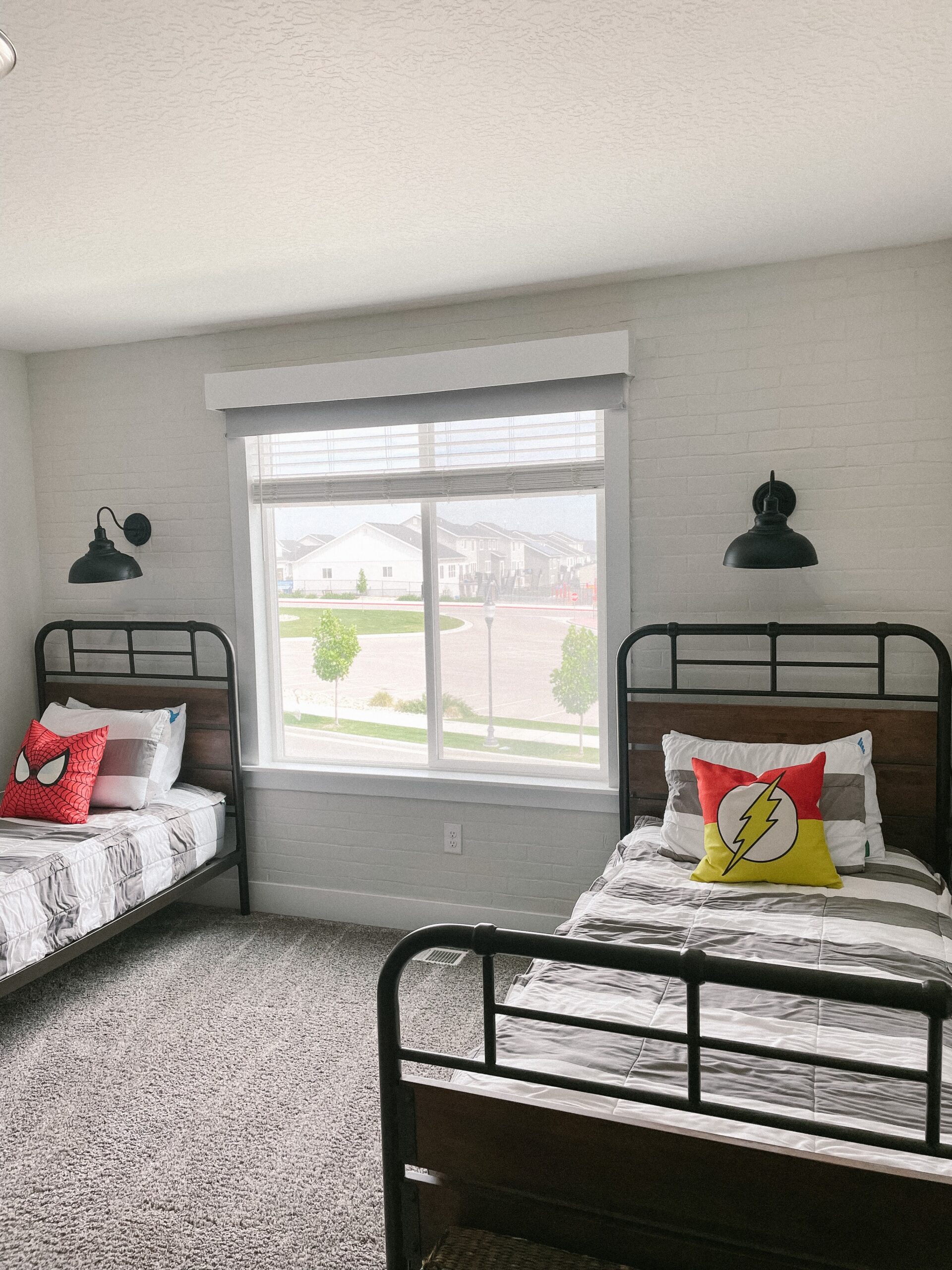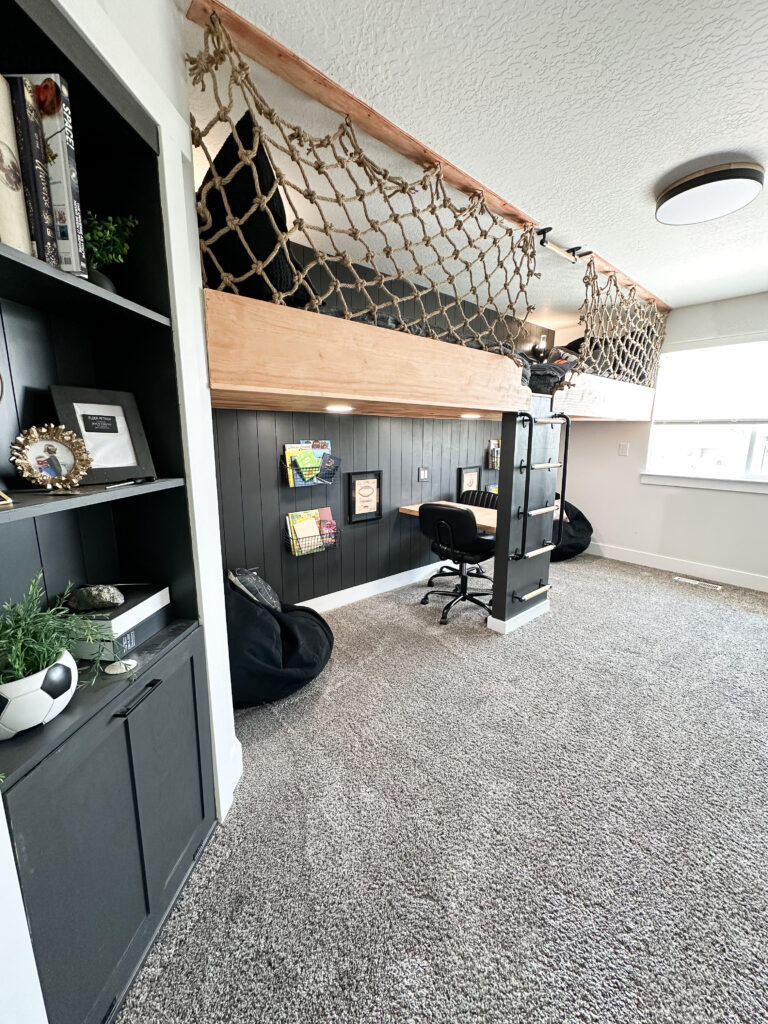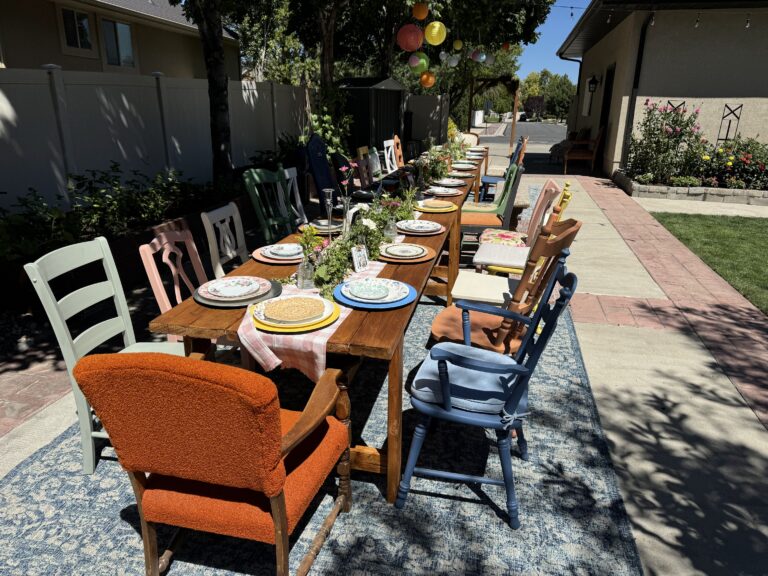The Ultimate DIY Guide to Faux Brick Wall Magic
Pinterest FAIL, or the most amazing story of redemption? I am going to say it was the best story of redemption! This project challenged me the entire way, but the end product is better than I could have hoped for. When I took on the faux brick wall treatment that I had seen floating around Pinterest, I was super hopeful. Everything I had seen made it look so easy. Hang the faux brick, apply spackle, and have a great looking wall treatment. WELL… That was not my experience. Perhaps it was simply a matter of preference, or perhaps it just did not work for me. Regardless, I am going to lay it all out for you! Ready??

Remember when creating your faux brick wall
When doing this project, keep in mind that the red from the faux brick comes through the spackle. In my room it looked kinda pinkish-orange. If you are not going for that look, then listen up. I did an experiment to decide what the best way to cover the faux brick was. and the results may shock you!
Step 1… hang the faux brick wall.
First you need to get the faux brick on the wall. When putting 2 pieces together, I recommend cutting along the “mortar” line, so you can puzzle piece the sheets together rather than having a harsh line. Its way easier to hide the seam when you do it this way. Next, to hanging it I used liquid nails and regular nails. You can do that, or just use regular nails. It just depends on how permanent you want it to be. If you plan to take it down in a few years, and do not want to have to replace drywall, probably opt for regular nails only.
Tip for cutting around outlets:
Take the outlet plate off, turn it around and put it back on backwards. Run some paint or toothpaste along the frame. Place your piece of faux brick on the wall were it will go and press it on the wet paint/toothpaste. When you remove it, you will have an outline of exactly where the outlet goes. Then just use your jigsaw to cut it out. I recommend cutting it about 1/2 in smaller than that, so your plate completely covers the hole. Seamless!
Step 2:
Next up, I caulked around all the edges of the faux brick and where it met the side walls, ceiling and base boards. This gives it a nice finished look.
Step 3: Where the faux brick wall got hard!
Once your faux brick is up, its time to cover it. Depending on what color you want it to be, will depend on how you do this step. I will tell you how I wish I would have done it, then I’ll go over the other options. Because at the end of the day, there is not a right or wrong way to do this. Only what you want and like.
I wanted it white, and I did not want the red from the brick to show through. What I should have done, was prime the wall with WHITE primer first, and then went back over it with the spackle. For the record, my favorite primer is BIN Shelac based primer. It is hands down the best at hiding colors.
Step 4:
Another thing I noticed, is that once the spackle was dry, it was really chaulky. And I can just imagine the mess it would have made in my boys room. So between the reds and oranges showing through and it being chalk-y, I ended up just painting the whole wall white. Which in the end I actually really liked how it looked, so I am ok with it!
The final faux brick wall
And to finish off this faux brick wall, I got these darling plug in sconces and hung them above both beds. I just love how it turned out!
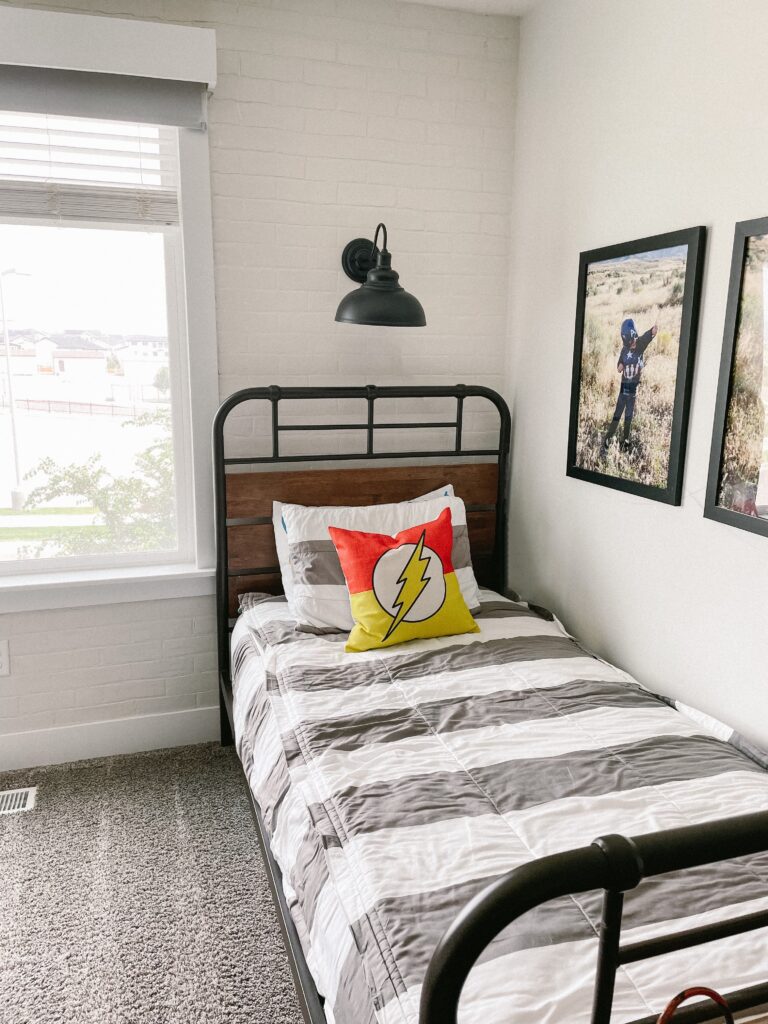
Now are you ready for the experiment on different applications and base coat vs no base coat?
The experiment
For this experiment, I tested different base coats with spackle and with joint compound. Here are my results.
I will say, that the photo does not do the colors justice. However, it does give you an idea of the different application methods and how they look dry without anything on top.
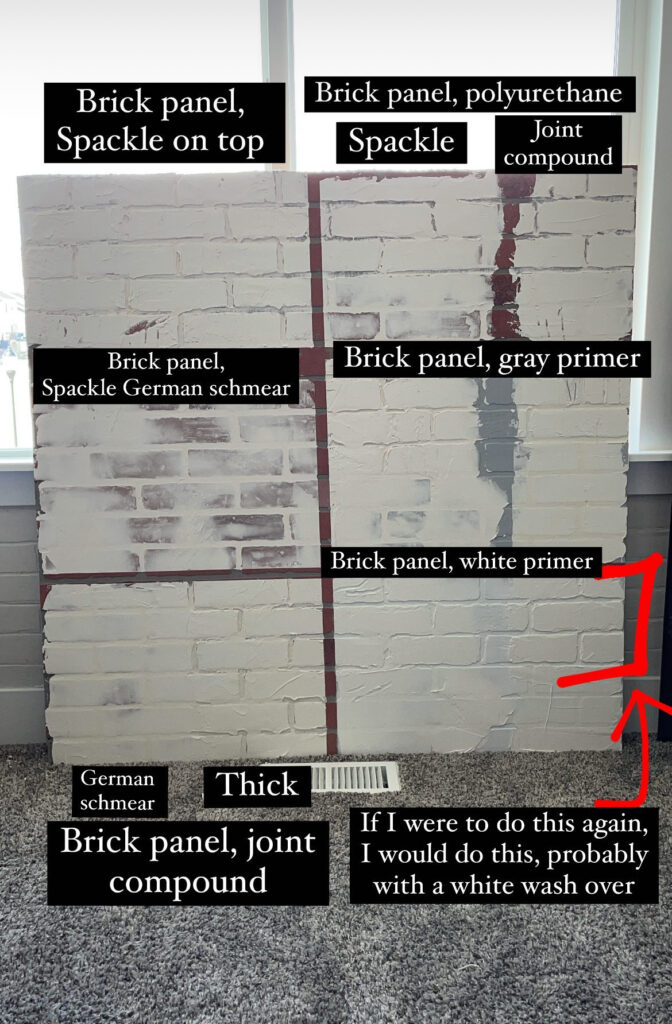
Brick panel with spackle on top, no base coat. You can see orange color coming through at the brick seams.
Adding polyurethane directly to the brick then spackle or joint compound on top. You could still see the orangish color coming through and there was not much difference between how the spackle and joint compound looked.
The gray primer shocked me. I could still see the orangeish red color coming through, I expected it to really cover the red, but it did not.
German schemer did not surprise me. I think that is a style that you either like or don’t like but it was basically exactly as I expected. I just wanted more definition of the individual bricks. German schemer tends to fill in the mortar lines and make it more of a flat surface.
The white primer definitely hid the red and orange the best.
TIP: Use a plastic putty knife when doing this project.
Basically if you like to see the red brick and don’t mind there being less definition of the lines, do German Schmere. If you kind of want a pinkish orange tint, either don’t do anything and apply the spackle directly to the faux brick or use a polyurethane or gray primer. If you want it completely white, use a white primer, then spackle, then paint it white.

Regardless of what you do, I am sure it will look amazing in your space and I cannot wait to see what you do!
Follow along for more DIY’s and fun at…

